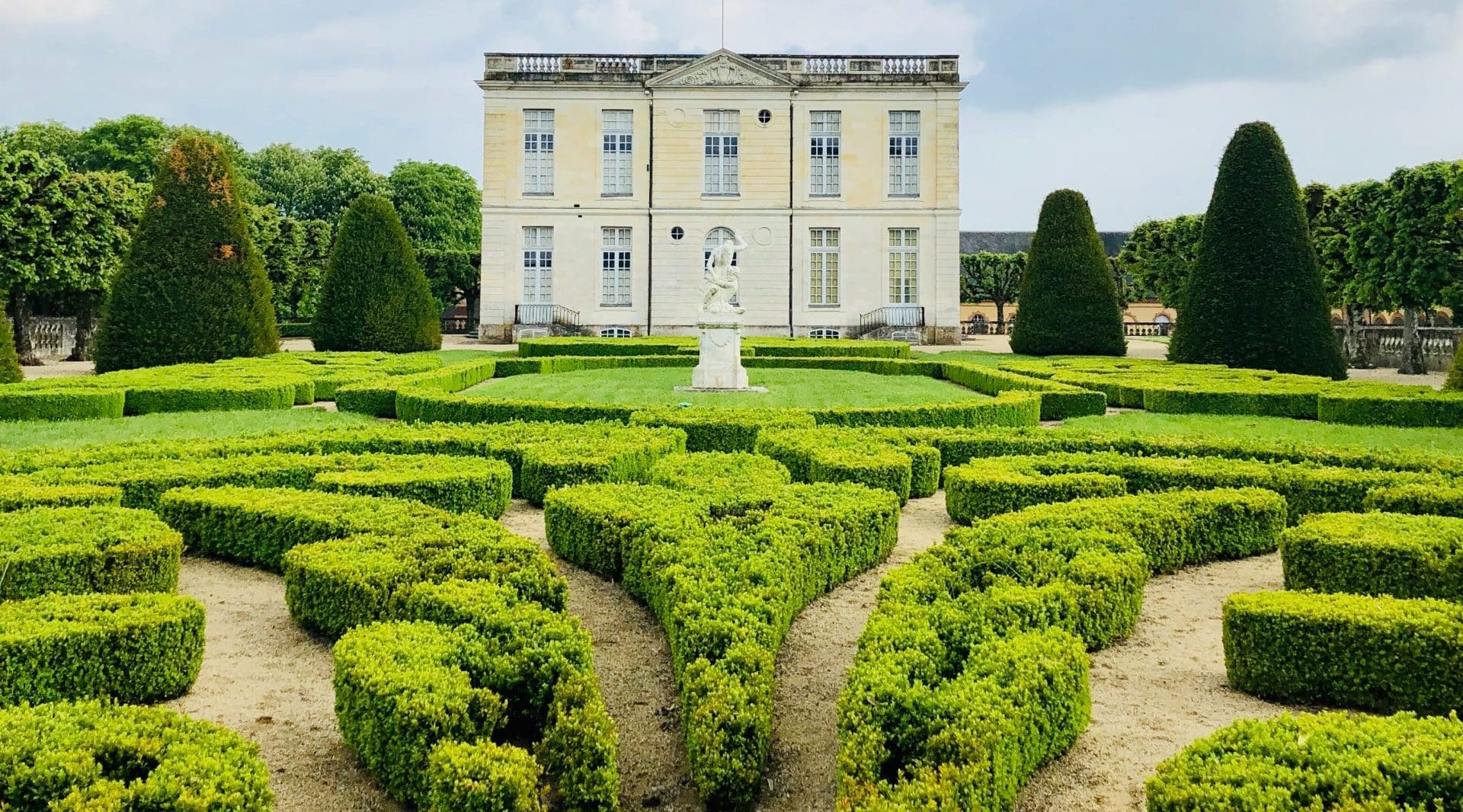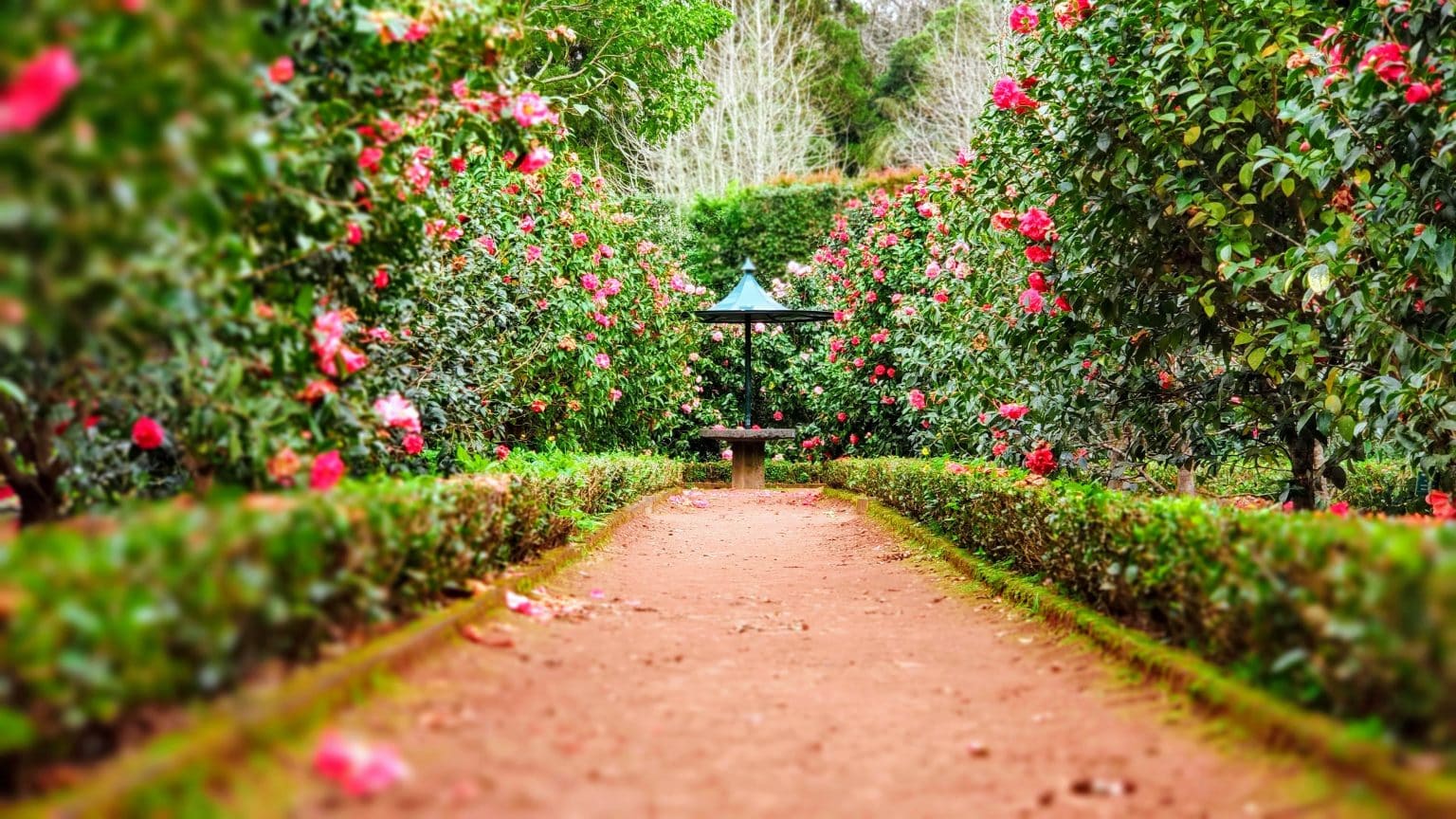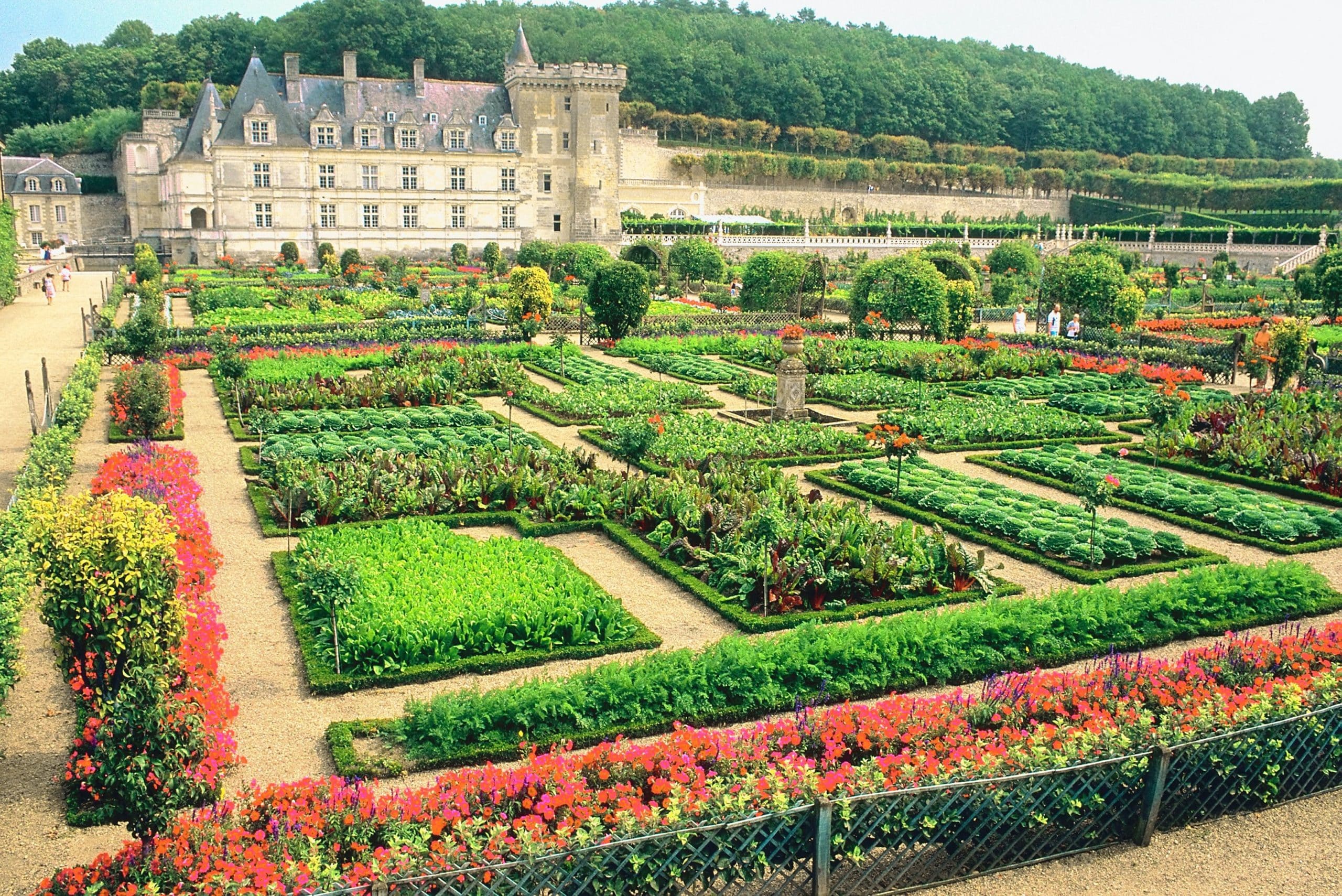Table of Contents
Every age and every country stamps its unique style of garden into nature’s clay – think of the distinctive royal stamp of the Gardens of Versailles, or the sprawling green space of the Englischer Garten in Munich, Germany. England and France have each nurtured their own distinctive gardening styles over the years, reflecting their cultural divergences and different philosophies of nature.
French gardens, like those at the Château de Villandry or the more famous Garden of Versailles, exemplify the Jardin à la Française style, largely influenced by the gardener André Le Nôtre. On the other end of the Channel, the development of the English landscape garden brought forth a more organic approach, championed by the likes of Capability Brown. Picture elements of ageing cast iron juxtaposed with lush, disorderly vegetation. So, in essence, it’s a battle of wills – man over nature or nature over man.
Unraveling the Mystique of the English Garden
Stepping into an English garden is like stepping into a real-life storybook – complex, elusive, entrancing. It’s a topsy-turvy world where precise geometric layouts give way to flowing green carpets and unpredictability holds reign. The charm lies not in taming Mother Nature, but in harmonizing with her ebb and flow. Each piece of foliage, each slab of stone, contributes to the larger canvas of delight.
The English landscape garden is a breathing testament to England’s passionate affair with nature. Rooted in the practicality of monastic herbs gardens, they blossomed into more aesthetic spaces, expressing unique personalities and narratives. Whether it’s the grandeur of royal parks or the rustic simplicity of a country cottage, the English have perfected the art of crafting gardens that pulse with life, mirroring the ever-changing moods of the seasons.
The History of English Garden Landscaping
The story of English gardens is woven with threads of history and culture. From humble beginnings, they morphed over centuries into the romantic, lush retreats we adore today. Cast your mind back, if you will, to a time when English yards teamed with vegetables, medicinal herbs and bursting blossoms, a necessity of a past where bathing facilities were non-existent luxuries.
Their evolution follows something of a ‘Cinderella’ tale. These gardens, akin to the rambling Gardens at the Palace of Versailles, were built not just for beauty but for sustenance. They embraced both the practicality and the enchanting whims of nature, utilizing elements like natural stone to augment the disarray, defining the boundaries between cultivated blooms and wild beauty.
Key Elements of the English Garden
Invitation and Intrigue. It’s a core tenet of English gardens. These green expanses, whether royal properties or cozy cottages, are bound together by a shared narrative – a continuous tale of vibrant nature and gentle admission. English gardens praise the joys of gardening and tell tales of life, with flowers blooming life afresh, and decay returning it back to soil.
Each garden, tailored to its unique narrative and space, unfolds like a layered drama. Principles of symmetry, abundance, and integration guide their essence, balancing meticulous design with a keen admiration for natural grandeur. Weaved throughout are pathways, less a statement of manmade intrusions, but more an invitational trail beckoning you further into its magical world. So step in, relax and let the biomelodrama unfold.
Symmetry and Paths: The Geometrical Heart of the English Garden
It’s not all wild abandon in an English garden, you know. Hidden beneath the veneer of nature’s disarray lies a skeleton of precise geometry. The symmetrical lines and softly curving paths lend an undercurrent of structure to the seemingly wild landscape. Yet, they never dominate or dictate. It’s about treading that delicate line between guidance and freedom, creating a harmonious balance that engages and delights the senses.
Annual and Perennial Plants: The Blooming Spectrum of the English Garden
So alright, you’re strolling down an English garden, right? It’s like walking through a rainbow, mate, with loads of color splashed around. Year in, year out, these spaces shine brighter than a new penny thanks to their variety of annual and perennial plants. Annuals – think marigolds, petunias, they show up for one big, flashy season then fade away, sort of like reality TV stars. But the perennials, they stick around, popping up reliably each year. Roses, forget-me-nots, lavender, they’re the garden classics you can count on, like that old reliable mate always ready with a pint. So see, with a mix of annuals and perennials, English gardens stay blooming like nobody’s business.
Hallways and Edibles: The Functionality Behind English Garden Design
In an English garden, looks ain’t everything though. There’s smarts in the design too, like in hallways and edible plants. Picture this, a verdant hallway with towering hedges carved out on both sides, a verdant channel guiding you on a whimsical journey. But hey, don’t be fooled, they ain’t just about the looks – there’s wit and cheekiness in the utility. Sneak around the corner, find yourself a little tangle of raspberry brambles or patch of fresh herbs. Handy for that Sunday roast, right? So it’s not all pretty faces and frills here, guv’nor. English gardens work hard and play hard.

French Garden: The Art of Making Nature Conform
The French on the other side of the channel, they follow a different rulebook when it comes to their gardens. The French folk have a bit of a love affair going on with straight lines, geometry, and structure. Bit like Cookie Jars all in a line on a perfect kitchen corner, ain’t it? French gardens demand that Mother Nature behaves herself and follows human rules, and why not, eh? There’s something pleasing about neatly trimmed topiaries that won’t step out of line, and blooming flowers confined to tidy paths.
Look at spots like Versailles, filled with grand squares, rectangles, and circles. All those cold stone statues and pavilions, the water features which just never get out of line. The French, you see, they’ve got this knack of not just taming, but absolutely domesticating the wild soul of nature. Geometry, precision and order, that’s the name of the game here.
The Evolution of French Gardens
With a glance at their gardens, one might think the French, a rather perfectionist bunch. Truth be told, they didn’t wake up one day to this high and tight approach to nature. French gardens have evolved over the centuries, guided by the tides of various sociopolitical eras, like the Renaissance and the Absolutism. Picture it as a giant jigsaw puzzle, pieced together by different garden-loving royals, nobles, and gardeners over centuries, creating this spectacle we celebrate today.
The Renaissance brought the love for symmetry and architecture. Later, Sun King Louis XIV, not to be outdone, turned French gardens into displays of absolute control and dominance. If it’s worth knowing anything about the French, it’s that they’ve always had that certain ‘je ne sais quoi’ when it comes to gardening.
The Distinctive Features of French Gardens
Each garden is like a unique fingerprint, mate. And French gardens, they’ve got some pretty distinctive features. It ain’t just about clipped bushes and regimented roses. They’ve got this knack for making a grand display. Wide open spaces, clear lines of sight, the blooming space set out to impress with an air of regality that’s hard to miss.
Check out the color schemes, they play cool with lots of soothing greens, blues, violets. Stone elements, glistening water features, they bring in a touch of art and architecture. Makes you feel like you’ve stepped into a living painting, straight outa the Louvre or something. So, you see, French gardens are a right spectacle mate, combining nature, history, and art in a way only the French can.
Order Over Nature: The Rigidity of French Garden Landscaping
There’s something to be said about the French way of gardening: a keen eye for detail, a rigid hand of control, and a sure sense of order. Think of it like an orchestra conductor, each plant and flower falling in line under the maestro’s baton. These gardens ain’t just spots of green; they are precise and regimented compositions, with everything having its right place and purpose. Gravel paths, for instance, serve as skeleton-like structures that rigidly guide the viewer’s eye, leading the spectacle from one verdant ensemble to another. Distinctly, it’s order over nature, baby.
Clean and Explicatory Spaces: The Spatial Openness in French Gardens
Moreover, French gardening ain’t just about sticking random shrubs, trees, and flowers together. These gardens teem with “clean” and “explicatory” spaces. Now, what does these fancy terms mean? Simply put, it’s about the room to breathe. No clutter, no fuss, just well-thought-out gardening that leaves plenty of open turf. A visually clear narrative unfolds from space to space, curating a controlled journey through nature’s exhibit. Ain’t just about being pleasing to the eye; a French garden is a story told through blooming chapters and verdant paragraphs, all nestled within crisp spaces.
Stone Elements and Cool Color Schemes: The Aesthetical Dimension of French Gardens
To pop some more life a French garden, stone elements are smoothly introduced—not just as decoration, but integral parts of the landscape, like the backbone of the land. Adding to the ambiance, a lot of blues and whites dominate the color scheme, giving off a certain elegance and coolness, like a lazy afternoon by the Seine. Together, these stone and color elements pair up in a harmonious dance, creating an aesthetic dimension that goes beyond the typical “green” garden. Ultimately, it takes a French garden from being your typical backyard barbecue to a sumptuous feast for the senses.

English vs French Garden: Similarities
Inspite their distinct styles and characteristics, English and French gardens share a common love for the spectacle of nature, curating the perfect symphony for a visual feast.
Cross-Cultural Garden Aesthetics: Exploring Shared Themes in English and French Landscape Design
What ties English and French gardens together ain’t just, well, they’re both gardens. This coupling goes deeper than that. They’re united under a shared, unspoken code: a bond of cross-cultural aesthetics. Their allure lies within the same realms of tranquility, elegance and order. Both garden traditions reflect a cultivated appreciation of nature, each in their own unique way.
The words of Milburg Francisco Mansfield, an early-20th-century historian, hold true even in this context: every culture, every century has its own variety of garden. In the daring spirit of these words, both English and French gardens, while differing in execution, echo a mutual obsession for nature’s spectacle, a shared understanding of landscape artistry across cultures.
Symmetry, Serenity, and Sculpture: Comparative Elements in English and French Garden Traditions
Dig deeper into them gardens and you’ll find that both English and French gardens share a passion for symmetry, serenity, and sculptures, each in their own distinct way. Simple and creative ideas in the usage of these elements have resulted in a strong aesthetic appeal that is universally acknowledged in landscape design. English and French gardens are like brothers from different mothers: different faces, same heart.
And why symmetry, serenity and sculptures, you ask? All three epitomize the timeless elegance of these garden traditions. An English garden leans towards natural symmetry and serenity with informal planting designs, while French gardens play with symmetry in a more regimented and orderly manner. Meanwhile, sculpture, a crowning jewel of any garden, bridges the creativity of these two traditions, ultimately marrying unnatural art with nature’s serene chaos. In summation, it’s a rhapsody of common elements scored out in two distinct tunes.
Timeless Elegance Through Nature: Uniting Principles of Design in English and French Gardens
The precise cutting of a hedge, the strategic placing of a flowerbed, the crafting of an arch – every action in gardening is a dance with nature. Take English and French gardens for instance. They have stamped their unique styles on the grand stage of garden design, yet, despite differences, they share key principles that boogie together in perfect harmony.
One of those is the practice of planting trees. Regardless of language or location, trees are a garden’s loudest voice and sturdiest anchor. Whether it’s an English garden teeming with magnificent Oaks, or a French garden accented by elegant Lime trees, both garden styles acknowledge the lasting grace and commanding presence that trees bring to the landscape.

English vs French Garden: Differences
If gardens could talk, they’d only use two words – English Gardens. These are the Hugh Grants of the horticulture world – charming, charismatic, and a little bit wild. However, they have their sophisticated counterpart in Formal Gardens, widely known as the ‘Sophie Lauren’ of garden design, formal gardens opt for radiating dignity, all while retaining their beauty, like a vintage Rolls-Royce. It’s the 16th century European Continent garden rivalry brought into the present day – a comparison of the Italian Gardens’ rustic warmth to the natural landscape charm of English and French gardens. Where architect buildings have paths edged with trees in Italian gardens, the English and French garden traditions rejoice in gardens that can be beheld from afar, like a grand painting.
Distinctive Flair: Contrasting Elements in English and French Garden Aesthetics
We’re now marching into the ring of contrasts – it’s bulldogs versus roosters as we examine the distinctive elements of English and French garden aesthetics. On the English side, it’s all about exuberance, wild beauty, and a bit of politely managed chaos. It’s like a garden party where everyone is invited and the dress code is ‘come as you are’.
In the French corner though, it’s a different kind of bash. French garden design is a white-tablecloth, champagne-in-crystal-flutes kind of event. It’s where stone elements are not just features, but essential guests, lending a sense of rigor and stateliness. This is not a clash of the titans, but a contrast of tastes, each lending its unique flavor to garden aesthetics.
Cultural Divergence: Exploring Differences in Design Philosophies Between English and French Gardens
Let’s switch gears for a moment and talk philosophy, garden philosophy that is. English gardens and formal gardens flaunt different strokes that define their identities. While English gardens argue ‘Why not let nature do its thing?’, formal gardens retort, ‘How about we guide nature to do our thing?’.
English gardens reveal their 16th-century roots, embracing a style that’s more about co-existing with nature than commanding it. In contrast, formal gardens, like their French and Italian counterparts, lean on humans deciding nature’s course, a testament to their unique European continent heritage. Still, each is a form of high art, sculpting the natural landscape in its unique style, creating spaces that retain their beauty come sunshine or showers, and are a treat to be beheld from afar.
Landscaping Legacies Apart: Contrasting Features and Styles in English and French Garden Traditions
Lean in close, let’s talk secrets – the secrets of gardening traditions. You see, English and French garden traditions have meaningful whispers passed down through generations, carried by the winds of time, from pruned Rose to trimmed Hedge. They hold distinct narratives in their flower beds, paths, and lawns – messages that tell the tale of their birth and growth.
But remember, these tales speak as much of contrast as they do of congeniality. While English gardens might boast a more curious and adventurous spirit, the French ones sneeze at disorder, swooning over clarity and structure instead. This ain’t a competition, mind you. It’s about appreciating the unique vibes each brings to the party – a gift to the world of landscaping that will be cherished for centuries to come.
Conclusion: The Best of Both Worlds in Gardening
If one was to time travel back to the 17th century, he’d likely find himself in the middle of an English landscape garden, marveling at its wild and seemingly unintentional beauty. The genius of English landscape designers like William Kent played a crucial part in the development of the English landscape garden style, a stark contrast to the formal French garden. They were inspired by elements from faraway lands and different times – drawing from the Italian Renaissance and even as far back as ancient Egypt. It’s like they’ve taken a big ol’ salad bowl and mixed up different greens to come up with a diet-friendly yet mouth-watering masterpiece.
Now, we’ve seen some pretty good stuff in this sparring match between English and French gardens. On one hand, we have the English cottage gardens and the landscape gardening style with its serpentine walks; like a child that’s been allowed to run free, they are a touch unruly but filled with undeniable charm. On the other, we have the Renaissance garden advocates, upholding the precise geometry and restrained elegance of the French garden – the brainchild of landscape aficionados who firmly believed that, much like a well-trained pet, nature should obey its human master.
However, gardening isn’t about choosing sides like in a football game. It’s about creating an outdoor space that gives a nod to your personality, your tastes. Sometimes, you might prefer the organized rigidity of a Japanese garden; other times, you feel like basking in the unapologetic vibrancy of an English garden. But the thing is, why box yourself in? Why not, instead, invite these different concepts – the French garden’s order, the English landscape garden’s untamed aura – into your garden and let them share a pot of tea, so to speak? Yep, the best of both worlds is very much achievable in gardening, and, in the end, it’s all about creating a space that not just looks good, but feels good, too. An outdoor sanctuary that beckons, teases out a smile and wraps you in its comforting, leafy embrace every time you step foot in it. Ain’t that the real beauty of gardening?

I’m John, a “seasoned citizen” and an avid gardener. I live in Minnesota, where our weather and growing conditions can be harsh and challenging. Over the years, I have learned a thing or two about being successful in growing things. I have curated these tips, which I think are helpful for the beginning gardener and the seasoned experts. If you have feedback, let me know in the contact form.




